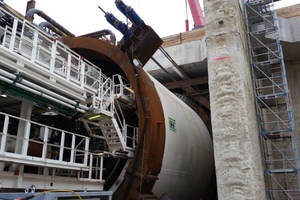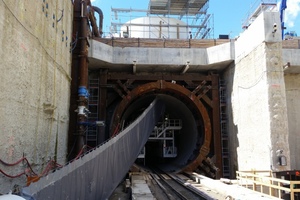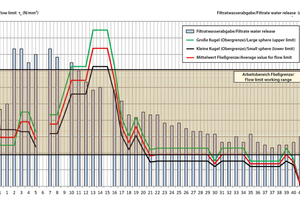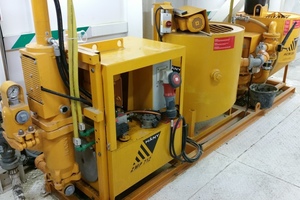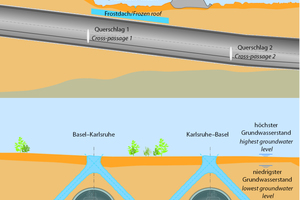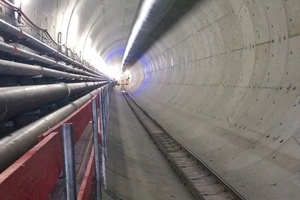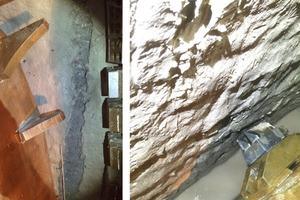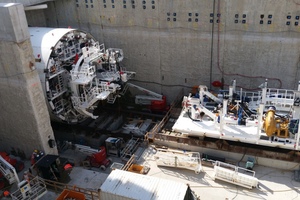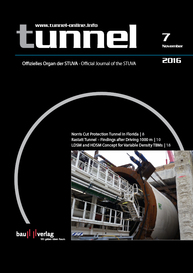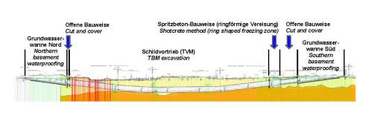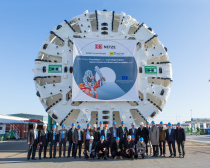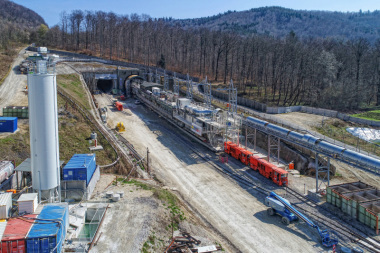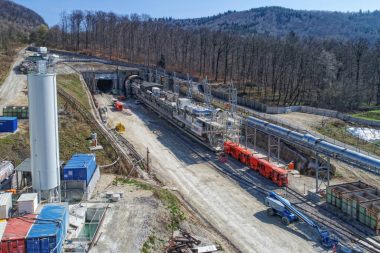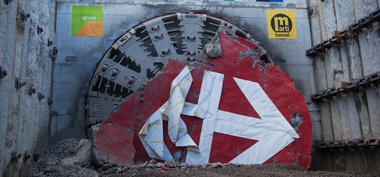Rastatt Tunnel –Findings after Driving 1000 m
Work started on the first tube of the Rastatt Tunnel on the new/upgraded Karlsruhe–Basle rail route at the end of May 2016 as scheduled. After the so-called “flying shield start-up” for the tunnel boring machine (TBM) and penetrating the jet grouted sealing block adjoining the construction pit, the Tunnel Rastatt JV (Ed. Züblin AG and Hochtief Solutions AG) was able to commence standard operation. After 100 m had been driven, the federal highway 36 was successfully undertunnelled and then the frozen section in the Federbach low-lying area accomplished. The first 1000 m was excavated by mid-September at an average gross rate of advance of 11 m per day. This article follows up on the project report contained in tunnel 1/2016 on building the roughly 4.3 km long Rastatt rail tunnel.
Start of Driving in the east Tube
The driving of the Rastatt Tunnel’s east tube commenced at the end of May 2016 from the starting pit to the east of Ötigheim into the adjoining jet grouted sealing block. Prior to the TBM entering natural soil, this is where the first compressed air intervention took place in order to check the functional capacity of the aggregates and control the state of wear of the cutting tools as well as the cutting wheel on account of the in principle increased abrasiveness of the sealing block. The functional capacity was confirmed. No wear giving rise to concern was...

